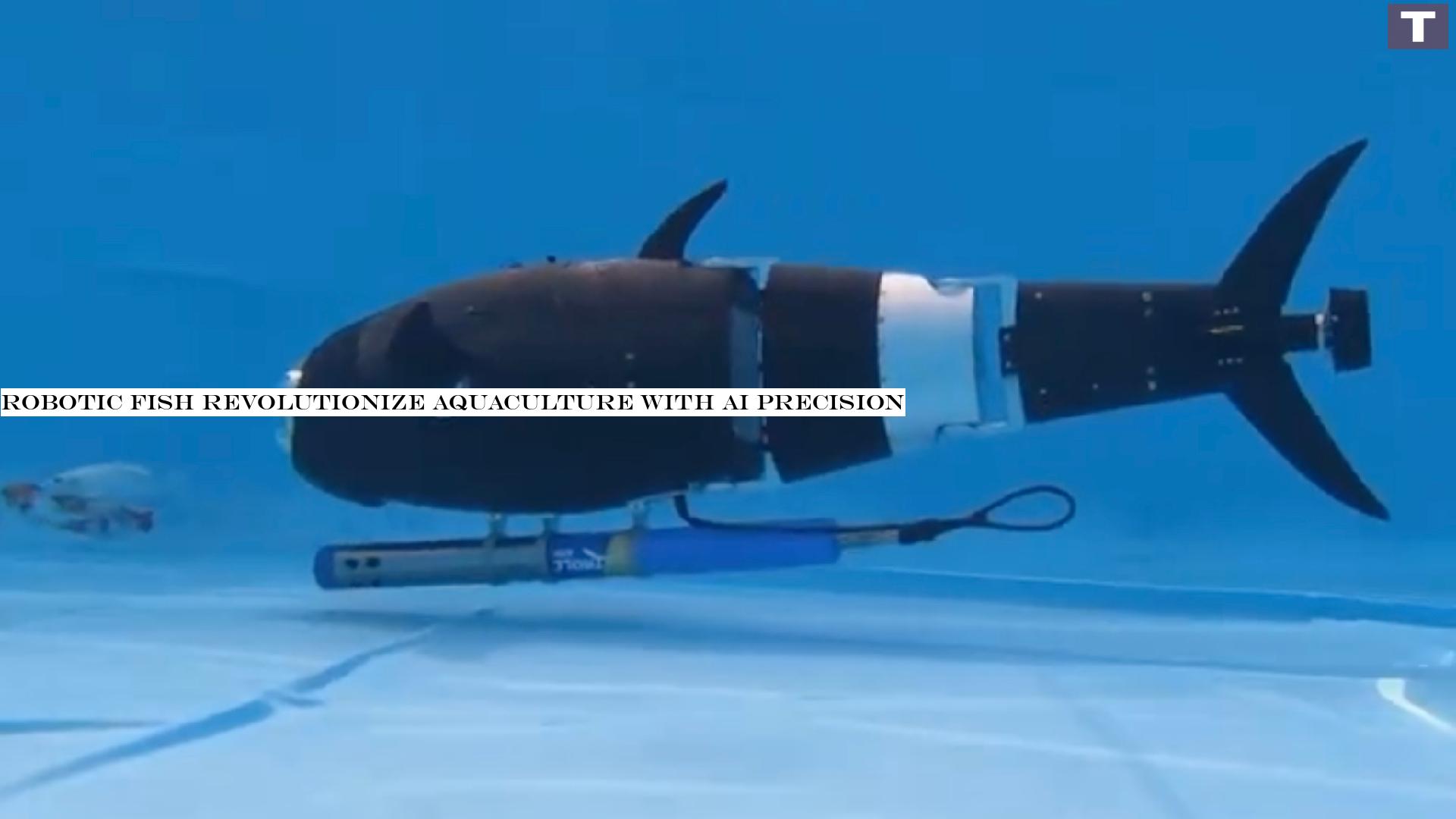
At the National Innovation Center for Digital Fishery in Beijing, two robotic fish with a sleek, metallic surface swim gracefully in a breeding tank, showcasing innovative research focused on changing fish farming.
These are the robotic tuna and robotic dolphin we established, stated Liu Jincun, an associate professor at China Agricultural University (CAU).
They represent various swimming attributes, but their core purpose is the exact same &-- to assist in fish farming.
Liu belongs to an undersea bionic robotics group dedicated to streamlining the labor-intensive jobs of fish farming.
We want to make the work of fishermen less difficult, said Wei Yaoguang, another staff member with more than 20 years of experience.
Wei remembered how anglers used to check large seafood farms, with scuba divers investing three to four days checking a 400-meter-diameter net cage for sea farming.
In addition to being time-consuming, the procedure was likewise costly.To address these obstacles, the team turned to undersea robotics equipped with sensing units to monitor fish and nets.
Their very first robot might patrol the entire 400-meter-diameter net cage in just 4 hours, a considerable enhancement over the manual process.However, the group soon experienced a new obstacle: fish stress response.
Fish are quickly stressed, and if the robotics get too close, they will jump out of the water, Liu explained.To minimize disturbance, the group designed a smaller sized, more structured bionic fish that blends seamlessly into its environment without interrupting aquatic life.
When our fish robots swim, live fish frequently follow them, producing a natural dynamic where bigger fish lead smaller ones, Liu said.Another obstacle developed with the robotic tunas tail, which swayed from side to side, causing its head to move unpredictably and making complex undersea assessments.
To fix this, the group developed a visual stabilization system, improving the robotics capability to clearly observe undersea conditions.According to professionals, these bionic robots integrate advanced technologies, consisting of fish-like propulsion systems and versatile dual-drive motors, which decrease disturbance and allow smoother swimming.
They are likewise geared up with high-precision sensors to keep an eye on water quality and fish habits in genuine time.Meanwhile, leveraging artificial intelligence, the group developed autonomous motion control algorithms and lightweight AI chips, allowing the robotic fish to swim, analyze and adapt autonomously in various underwater environments.Experts think the robotic fish opens brand-new possibilities for fisheries management, such as directing target fish to designated areas for more effective harvesting and enhancing feeding strategies.
Traditional feeding methods can lead to waste or uneven circulation, however the robotic fish, with an incorporated bait bin and sensing units, can provide food more exactly by evaluating bio-indicators such as size, number and activity level, Liu said.
This lowers bait waste, decreases aquaculture expenses and enhances the growth environment for fish.Beyond aquaculture, robotic fish have potential applications in deep-sea exploration and marine resource tracking.
Traditional undersea devices is often large, energy-intensive and disruptive to marine life.
Bionic robotic fish, with their quiet, inconspicuous nature, can collect deep-sea information, screen marine ecology, and help with topographic mapping without interfering with water ecosystems, Wei said.So far, the group has actually gathered over 200 terabytes of video data on more than a lots fish species, in addition to 10 million pictures and videos.
This data is essential for training AI models and will add to smarter, more efficient fish farming, Wei added.The group has actually also incorporated its intelligent aquaculture innovation with the Fanli Big Model, an AI-powered system established by the National Innovation Center for Digital Fishery.
Deployed across 23 provincial regions, the technology now manages over 6.3 million square meters of land-based aquafarms and 5.5 billion square meters of pond and offshore aquaculture farms, cutting labor expenses by 50 percent.In addition to the robotic fish, the center has developed a range of AI plus fishery innovations, including water quality tracking, fish habits analysis, intelligent feeding and disease early warning, providing extensive technical assistance for contemporary fisheries.Li Daoliang, director of the center and a teacher at CAU, stressed AIs transformative function in aquaculture.
AIs effect on fisheries will be profound, enhancing effectiveness while also promoting sustainability.
With the worldwide population growing and food safety issues rising, standard fish farming deals with challenges such as water contamination, resource waste and drug misuse.
AI can resolve these issues and assist attain precise fisheries management, he stated.
Our group will continue exploring innovative options in undersea robotics to develop a more efficient and smart future for fish farming, Li included.(Cover: The robotic fish developed by the CAU team./ CMG)

 8
8






